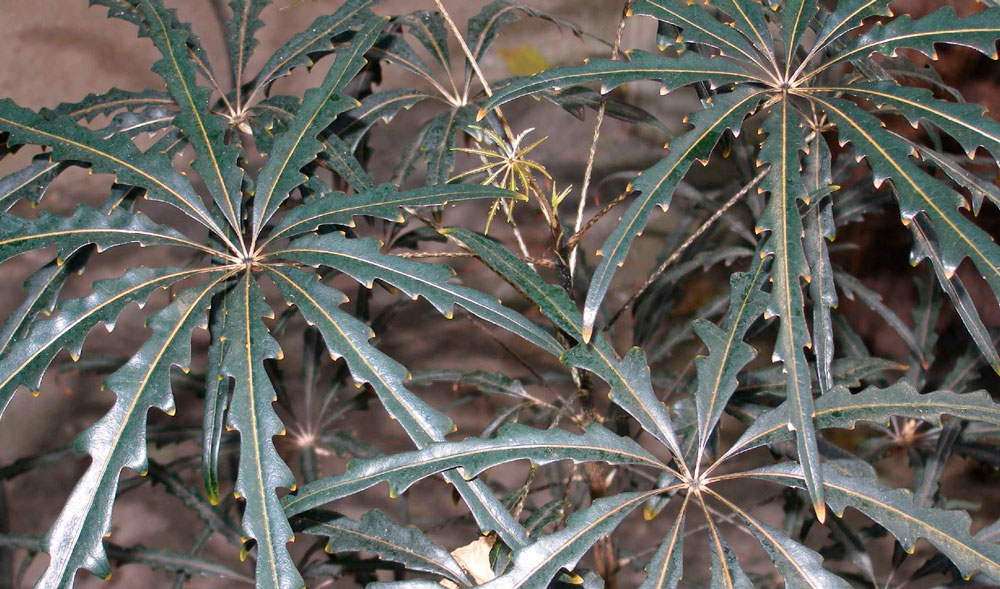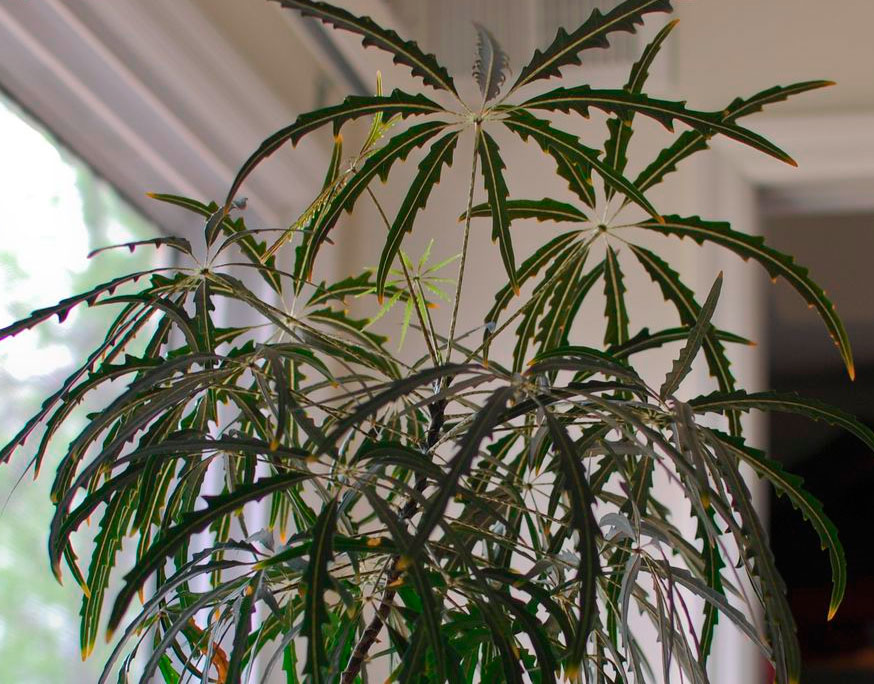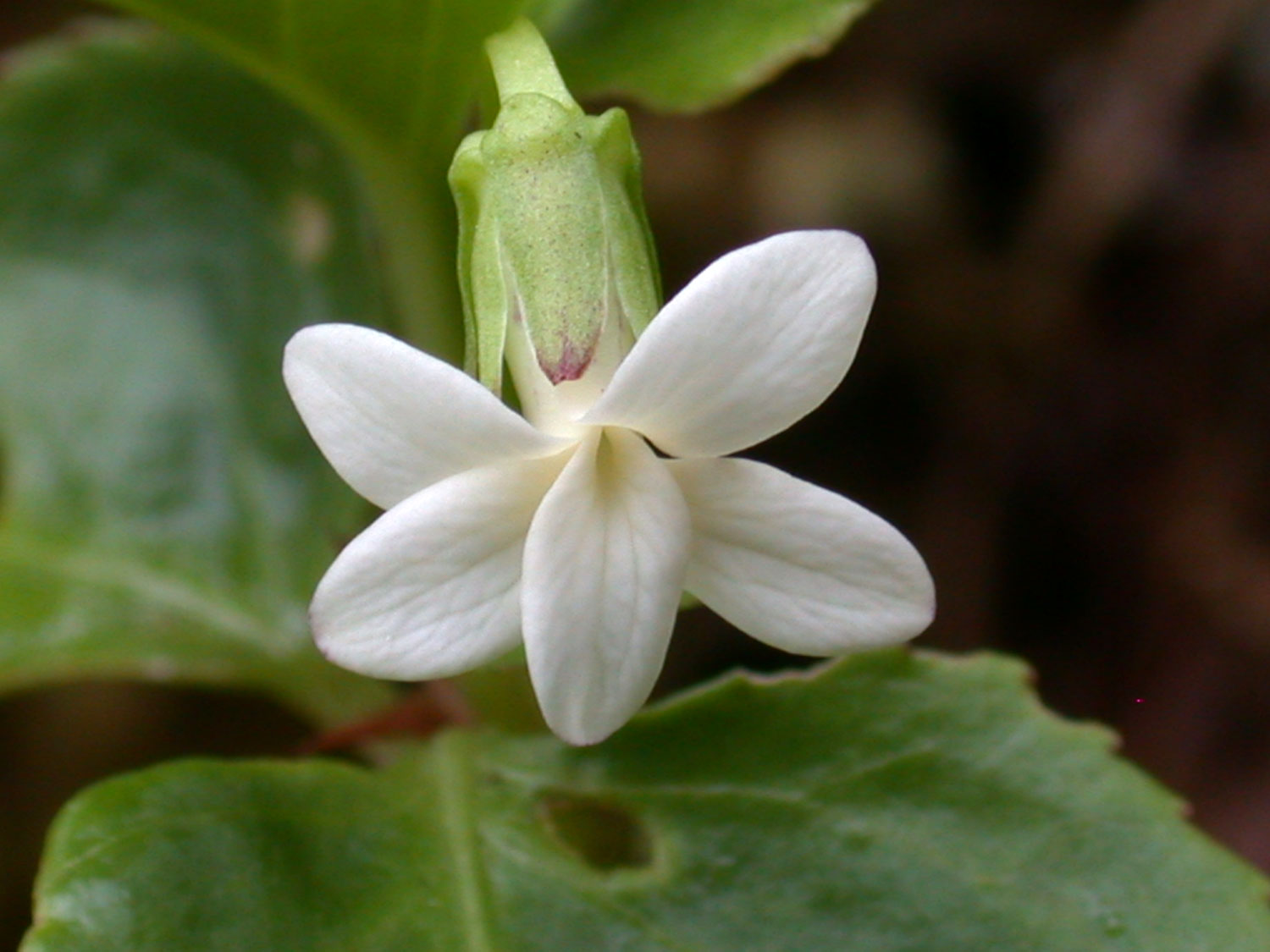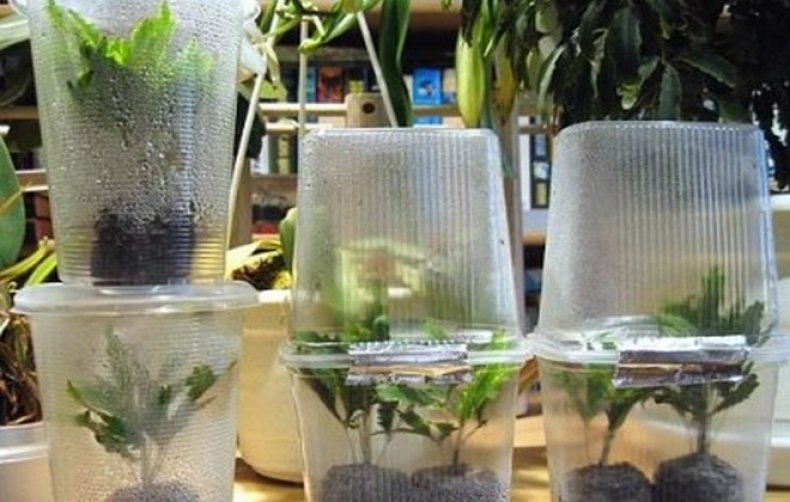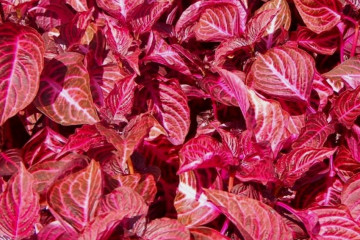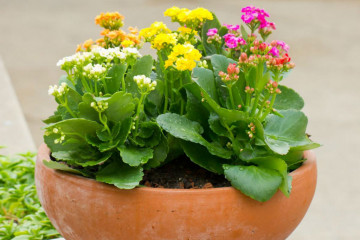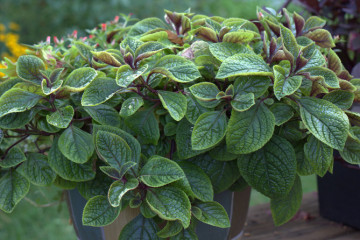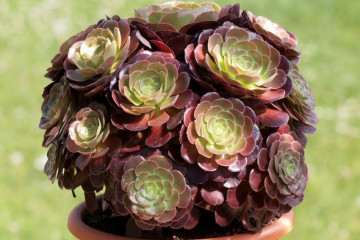Dizigoteka: home care and main varieties
Content:
Dizigoteka is originally from Oceania and Australia. This flower is rarely chosen for home cultivation. Some growers position dizygotek as a capricious plant, others do not consider it bright and memorable. Many people simply do not know anything about this beautiful plant. However, the dizigoteka flower can serve as an excellent decoration for a home or office.
Main types
Dizigoteka is an elegant evergreen shrub. It has serrated, serrated leaves. Most of them are brown-black rather than green.
In some varieties, their color is copper-red. Dizigoteka has 17 types.
Dizigoteka Elegantissima
This species is a treelike branching shrub. Home care for dizygoteka Elegantissima must be thorough. The leaves of this plant are complex, palmate with long petioles. The number of dark green leaves emanating from one point is 4-11.
Leaves are elongated, elongated, with jagged edges. Dizigoteca Elegantissima has small flowers. They are collected in umbrella-type inflorescences. In this species, breeders have bred varieties with leaves that have different shapes and colors.
Dizigoteka Bianca
At the Bianca dizigoteca, the leaves are divided into three parts. The surface has a dark green color, white edges, it is dotted with purple streaks.
Graceful
Dizigoteka graceful in height reaches 2 meters. It differs from other species in that it is weakly bushy. There are delicate carved leaves that are particularly beautiful. There are 10-11 leaves in the umbrella. Their length can be up to 30 centimeters.
This plant grows very slowly and can take many years.
Castor
The leaves of this species have three lobes. Their length reaches nine, the width is one and a half centimeters. The edges have rounded teeth. Light streaks run along the leaf surface.
Dizigoteka Kerkhova
The dizigoteca plant of this species has wider leaves. The bush grows slowly, but it is able to bush well. Adult representatives can reach a height of 140 centimeters.
Home care
When growing this plant, you must constantly remember that the shrub is sick due to sudden changes in temperature or drafts.
The plants are sold in pots filled with peat chips. Usually, three sprouts are planted in each of them. After the dizigoteka is purchased, home care begins with the fact that it needs to be transplanted. The best option would be to take a soil mixture designed for dracaena and alocasia. It is important that the soil is not only nutritious, but also loose, allowing water and air to flow well to the roots.
Watering
It is necessary that watering is regular. It should not be plentiful in order to avoid overmoistening of the roots. Otherwise, the plant will start to sour and hurt. The easiest way to determine when to water is by looking at the topsoil. If it is dry, then the time for new watering has already come.
To moisturize the plant, you can use rainwater or water infused from the mains. Its temperature should be slightly above room temperature.
In summer, the plant needs more intensive watering, in winter it must be reduced. If the plant begins to shed its leaves intensively, then this means that it does not receive enough moisture, and watering must be increased.
Temperature
Dizigoteka is a thermophilic plant. The room temperature suits her well. The temperature range from +18 to +28 degrees is comfortable for her. If during the winter period it is too cold (less than +18 degrees), then the plant may begin to shed its leaves.
In the event that it gets too hot, the tips of the leaves will begin to dry out and curl up. It is important not to allow sudden changes in temperature - the plant does not tolerate them well.
Humidity
It is also recommended to put a pallet with wet expanded clay or pebbles in the immediate vicinity of the plant. The surface of the soil can be covered with damp moss.
Pruning
This plant, as it grows, loses its lower branches and grows upward. If you do not prune at all, then the dizigoteka will resemble a palm tree.
In order for the bush to grow less quickly and evenly fill the volume, the plant needs formative pruning. This procedure is carried out in early spring. If you trim the plant, new shoots will start to grow from the base of the trunk.
Lighting
Dizigoteka loves abundant, but diffused light. The light needs to be from a constant source. If it is too dark for the plant, this can lead to the fact that the leaves will fall off. The minimum daylight hours are 10-12 hours. In winter, its duration is insufficient. In order to compensate for this, it is necessary to provide the plant with light from the phytolamp.
It is not recommended to leave the dizigoteka outside in the summer. For this it is not adapted. The plant will be able to grow well only if it is indoors.
Intense heat in summer can adversely affect the health of the shrub.
Top dressing
When the plant grows intensively, it is required to feed it twice during each month.
Dizigoteka well accepts fertilizer that is diluted in water.
Plant transplant
According to the description, the need to transplant a plant occurs every 2-3 years. For this, new soil should be prepared. Adult plants are transplanted into a container of the same size. If young plants are transplanted, then it is necessary that the new pot be larger than the old one.
When performing the transplant procedure, special attention must be paid to careful handling of the roots. After the plant is removed from the previous container, the soil is slightly peeled off from the roots and moistened with water. When the plant is transplanted, it is watered.
Problems in violation of agricultural technology
If problems arise during cultivation, in most cases this happens when the rules for caring for a dizygote are violated. The following are recommendations on what to do in such cases:
- There is a massive fall of leaves. There may be several reasons: poor or too abundant watering, the presence of strong drafts. Another reason might be to move the pot to a different location.
- The leaves are drying out. In this case, in order to care for them, you need to make watering more frequent and increase the humidity of the air.
- If the leaves wilt, it means the plant is too hot.
- Leaves are dry and brittle. This can be corrected by spraying them with water.
- If the color of the leaf plates has changed and they darkened, then this indicates problems related to the composition of the soil.The reason may be that the soil is salty, too acidic, or not loose enough.
- White spots can be seen on the leaves when using hard water.
- If the dizigoteca grows too slowly, then the reason is a lack of light or the use of too large a pot for the shrub.
In order for the dizigoteka to grow well, you must carefully follow the rules of care.
Breeding options
For reproduction of the dizigoteka, seeds or cuttings are used.
Seeds
To grow from seeds, use plastic containers filled with a special substrate. It is prepared from peat and sand, taken equally. The containers must be covered with foil and the required humidity level and temperature must be provided.
The sprouts need to be ventilated daily, increasing the time more and more. When they germinate, they are planted in a permanent place.
Cuttings
Planting material is taken from the tops of the bush. Cuttings are rooted only if phytohormones are used.
The planting material is planted in a specially prepared substrate. Heating must be provided during cultivation. From above, the cuttings are covered with plastic wrap.
There is another option for rooting cuttings. To do this, use boiled water in which activated carbon is dissolved. The emergence of roots during germination of cuttings is expected within 3-4 months.
The dizigoteca plant is very decorative, capable of decorating a home or office with graceful foliage. When growing it, you need to know the rules of care and follow them.

